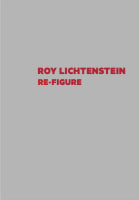Castelli Gallery is pleased to present Roy Lichtenstein: Re-Figure. This exhibition focuses on Lichtenstein’s diverse treatment of the human figure in works that proceed from his iconic cartoon paintings from the ’60s. Featuring some of the artist’s most innovative works, Lichtenstein: Re-Figure aims not only to highlight the artist’s engagement with the human figure—a central theme throughout his career—but also to “re-figure,” in the sense of reassessing, the common yet reductive view of Lichtenstein as the painter of pop culture images.
Just as artists from antiquity through modernism studied the human form, Lichtenstein too engaged in a sustained investigation of this subject. Despite the ubiquity of this theme, Lichtenstein created his highly original works using a diverse spectrum of imagery drawn from art history and popular culture.
The works on view exemplify the different types of imagery Lichtenstein experimented with over the years, including the distinctive styles of art movements such as Surrealism and Abstract Expressionism as well as the design of commercial images. For instance, in Drawing for Female with Comet, 1977, Lichtenstein works in a Surrealist idiom by referencing the work of René Magritte, Giorgio de Chirico, and Salvador Dalí. Other works in the exhibition juxtapose abstract and figurative ways of representing the human figure. For example, in Portrait Triptych (Study), 1974, and Studies for Pseudo Abstraction I & II, 1994, Lichtenstein explores what happens when recognizable human features become fragmented or simplified to geometric shapes. He approaches this topic in a different way in Woman, 1981,and his Brushstroke Head sculptures from 1987 by treating the shape of a brush stroke as an abstract image in its own right, which he in then uses to compose the face and body of a woman. Composition with Two Figures, 1979, and Face and Feather, 1979, push the question of figuration versus abstraction to its limits, to the point where it becomes difficult to distinguish the human figure within the abstract composition.
By examining the many forms Lichtenstein used to represent the human figure, the exhibition aims not only to highlight Lichtenstein’s unique approach to a central subject in art history, but also to show how these inventive works in turn offer a fresh perspective on one of the most fundamental artists of 20th century.











